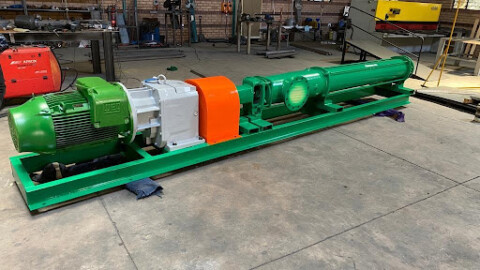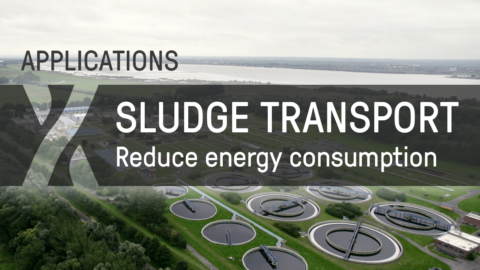The pump industry relies on expertise from a large and varied range of specialists, from experts in particular pump types to those with an intimate understanding of pump reliability; and from researchers who delve into the particulars of pump curves to experts in pump efficiency. To draw upon the wealth of expert knowledge the Australian pump industry has to offer, Pump Industry has established a panel of experts to answer all your pumping questions.
This edition of Ask an Expert will look at a particular challenge all maintenance-intense progressive cavity pump applications face on a regular basis; how can quick, easy and cost-efficient maintenance solutions reduce downtimes to a minimum?
All pump applications that require a stable process and minimal downtimes rely on efficient maintenance of pumping equipment. The larger the pumps are, the more difficult maintenance becomes. Thanks to creative engineers, some easy-maintenance solutions can significantly reduce downtimes and save costs.
Progressive cavity pump maintenance: a blessing and a curse
The optimal duty point of a pump is of utmost importance for the performance of the plant’s operating process. Rotor, stator and mechanical seal can face tremendous forces within the pump. Abrasive or corrosive mediums constantly abrade the surfaces and therefore impact on pump performance.
Thus, maintenance is a regularly due process that unfortunately leads to downtime of either part, or the whole of a plant. Additionally, the task requires allocation of trained staff, the right spare parts, perhaps some special tools, plus dismantling of pipework and sometimes moving the pump out of place.
This means maintenance always consumes human and financial resources as well as valuable time. The absence of proper and regular maintenance can lead to catastrophic failures and long downtimes, whereas a thoroughly maintained pump assures smooth plant operation.
Simplified maintenance by way of MIP (Maintain-in-Place) pumps has been a feature for some progressive cavity pump manufacturers for more than ten years, but designs have generally been limited to smaller sizes with some limitations on flow rates and pressures.
- Typical MIP PCP which has been available now for ten plus years.
- Typical MIP PCP which has been available now for ten plus years.
Breaking News: maintaining large progressive cavity pumps is now simpler than ever
The individual components of large PC pumps often weigh several hundred kilos. From the piping to the pressure branch, stator and suction casing, at times mechanics must dismantle virtually the entire pump for maintenance.
Occasionally, transporting the pumps to a workshop is necessary. The maintenance can therefore extend over several days, meaning high costs and an enormous amount of work for the plant operator.
The good news is that it is now possible to change the rotor, stator and mechanical seal without removing the suction casing or pressure branch from the pipeline or dismantling one of the joints.
This means no removal of pipework or installation of heavy lifting and transportation equipment. Only a few progressive cavity pumps manufacturers offer a Maintain- in-Place solution, even less offer this feature for large PC pumps.
The best solutions enable a quick access to the rotor and drive joint, which can save up to 80 per cent maintenance time. This paves the way for preventive maintenance.
Regular, easy and quick inspection of drive side components results in increased uptime and lowers the lifecycle costs of the pump.
This is especially important in critical applications that require high operational safety and performance as well as absolute reliability such as wastewater management or mine dewatering.
- Latest MIP design example for large PCP models.
- Latest MIP design example for large PCP models.
 About the author
About the author
Peter Vila, Managing Director of SEEPEX Australia, is a progressive cavity pump expert. He has been involved with pumps for over 40 years. Peter spent the first five years repairing pumps and the following 35 years in technical sales, 20 of which have been with SEEPEX progressive cavity pumps.
For more information on progressive cavity pumps, please contact SEEPEX Australia on (02) 4355 4500 or at [email protected]





















